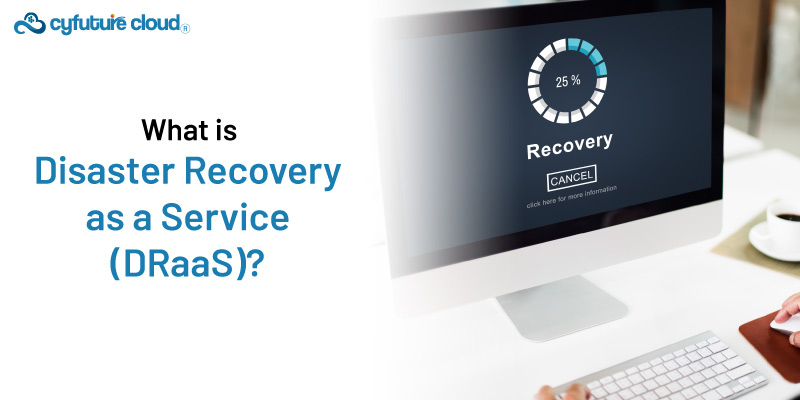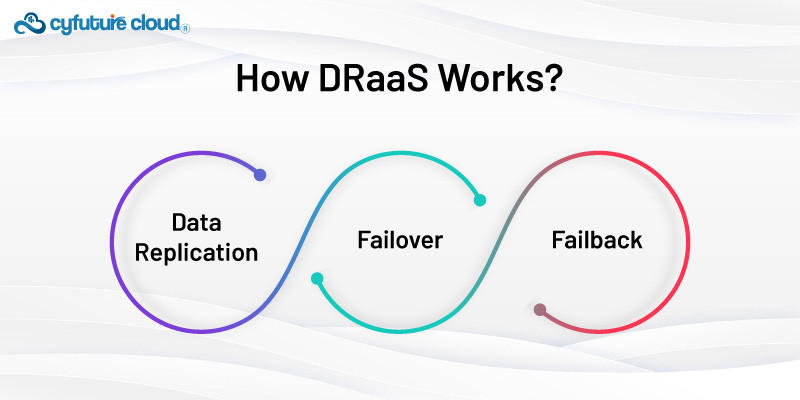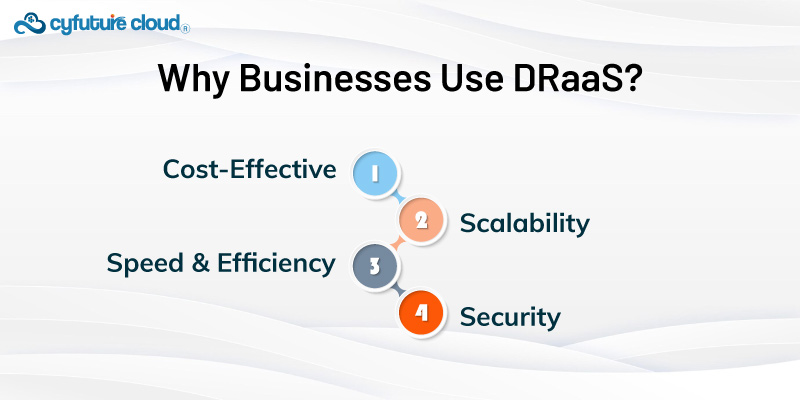 Server
Colocation
Server
Colocation
 CDN
Network
CDN
Network
 Linux Cloud
Hosting
Linux Cloud
Hosting
 VMware Public
Cloud
VMware Public
Cloud
 Multi-Cloud
Hosting
Multi-Cloud
Hosting
 Cloud
Server Hosting
Cloud
Server Hosting
 Kubernetes
Kubernetes
 API Gateway
API Gateway


DRaaS stands for Disaster Recovery as a Service, and it is a form of cloud computing, where a company can recover the infrastructure after a disaster at a faster rate. Suppose one day your company server goes down, or perhaps a calamity razes down your data storage facility. Thus, using DRaaS, your business can quickly recover with limber disruptions and little to no data loss, allowing you to resume operations.
Fundamentally speaking, DRaaS is the replication of servers, physical or virtual, and hosting of the original or a copied version off-site, usually in the cloud. This replication guarantees that in case of a disaster it can be a cyber attack, power failure or defective hardware, then the backup systems can be initiated almost instantly.
Data Replication: DRaaS carries out frequent or periodic backups to a server located far from the primary site. This can happen in real-time or be trended according to a set number or open-ended scale and at specified time intervals.

Failover: DRaaS allows you to transition to the secondary systems in case your main structures cease to function. Such a switch is generally changed automatically and does not need manual intervention, thereby increasing the rate of recovery in cases of instabilities.
Failback: After you recover your core setup, DRaaS assists in restoring the systems from the backup or clone infrastructure to the main environment. This helps reunite normal operation with the updated data, without being stalled by data verification and input.

Businesses opt for DRaaS for several compelling reasons:
Assuming that the DRP will implement traditional disaster recovery methods will result in serious drawbacks. These methods would require a separate data center, which implies the additional investment in hardware and software as well as important time and resources for their maintenance. DRaaS, therefore, runs a cloud provider’s infrastructure, in which clients are billed only when they utilize the service. This can greatly minimize the initial and recurrent expenses of DR and offer vital support to an organization’s critical programs.
You will also realize that DRaaS can grow to accommodate your business's needs. Therefore, depending on the corporation's status, the level of service can be altered to best suit your needs. This also means that as your business evolves, you can easily improve the DR plans within your organization without massive changes now and then.
Since DRaaS is cloud-based, recovery time is faster than conventional recovery efforts because it is on-cloud. In contrast, data and applications can usually be recovered in a few minutes to a few hours, but not in one or two days. This speed is crucial as it reduces interruptions and allows businesses to continue their operations.
DRaaS providers ensure that your data is secure and protected in case it is stolen, duplicated, or hacked while replicating your data or even when stored there. Some of the measures they employ are encryption, which ensures that your data is secure from hackers and any other form of cyber attack.
Selecting the right DRaaS provider involves several considerations:

Ensure that the DRaaS providers provide suitable SLAs with detailed finer points investigated. These include the terms concerning RPOs, RTO, uptime, and support that the provider is willing to provide. Make sure recovery objectives and your business's operational requirements are taken into consideration while defining the SLAs.
It is crucial to understand if the DRaaS solution provided aligns well with the current technology environment and applications. Every provider may excel in a certain ecosystem or be better suited for some kind of environment, so there has to be a match with your technology stack.
Disaster recovery involves handling sensitive data and as such, needs to be secured from external influence or participating in insider threats. Ensure that the provider uses the best security to protect the data, copies encryption methods, secure login, and meets the industry standards of data protection laws like the General Data Protection Regulation (GDPR) or Health Insurance Portability and Accountability Act (HIPAA).
Determine the type of costs included in the DRaaS solution to be accommodated. While some providers may have an account cost based on storage space, others may employ a cost-per-use or flat rate cost. This means that consumers should ensure that the cost they are paying reflects the services they need and want without any additional costs incurred.
Another area where a good customer support experience can make a difference is during a disaster recovery event. Select the service provider that offers instant support through representatives who are always online and willing to help out.
Disaster Recovery as a Service is a crucial component of modern business continuity planning. It offers a flexible, cost-effective, and efficient way to protect your data and ensure rapid recovery from a wide range of disruptions. By understanding how DRaaS works and selecting the right provider, you can safeguard your business against potential disasters and maintain smooth operations, no matter what challenges arise.

Let’s talk about the future, and make it happen!
By continuing to use and navigate this website, you are agreeing to the use of cookies.
Find out more


